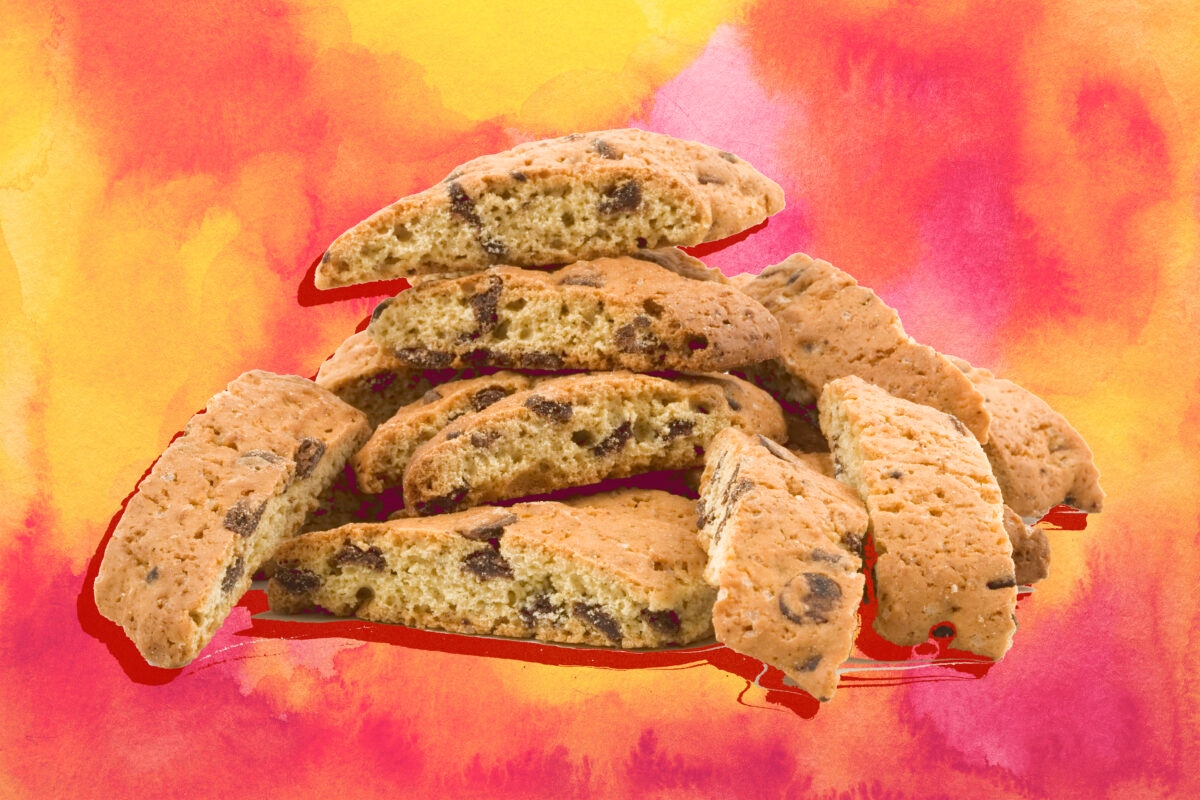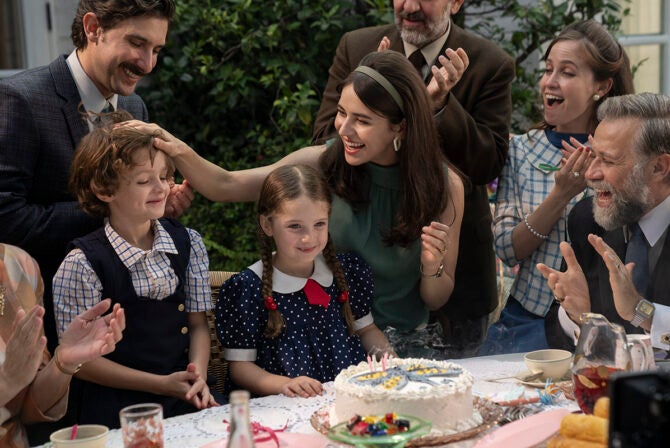During this unsettling autumn, as the Days of Awe approached and then slipped away, I made my mother’s mandelbrot, as I do every year. And though everything is different this fall — from our Yom Kippur services by Zoom to online school and socially-distant gatherings with friends — thank heavens the mandelbrot was the same.
Also different this year: My eldest child was away at college for the High Holidays, the first time one of my two daughters has been absent since I became a mother. My eldest is the one who likes baking with me best; she’s my expert challah-braider, my chocolate-chip measurer, my bold experimenter who encouraged us to try and bake eclairs and french macarons and layer cakes. For the holidays, I sent her a package with my delicious (but less-beautifully-braided) challah, two apples from our favorite farm, and, of course, a tub of homemade mandelbrot.
Mandelbrot is a dessert that appeared in my childhood one year when my mother got the recipe from a cousin I’d never met. Raising her family in the midwest, far from her large extended one, I think my mother was looking for ways to recreate the Ashkenazi Jewish feasts from her New York childhood. Her mandelbrot is sort of a cross between chocolate chip cookies and biscotti; it’s shaped into long loaves, baked part-way, sliced, and baked again. The recipe became an instant family staple that my mother made every July. She froze it in big plastic containers so that when she went back to her teaching job in the fall, she needed only to defrost it on the eve of Rosh Hashanah, in honor of her mantra: “Sweets for a sweet new year.”
Every Rosh Hashanah, my mother would invite all her friends to our house after services for desserts and coffee, sugar forming a crust over all of us for the year ahead. If the weather was warm, we’d form a circle of chairs in the yard and discuss the sermons of every rabbi in town, joined by at least one friend in every congregation. Sipping coffee and nibbling mandelbrot, this one and that one gave sermons of their own. As a young girl and a teenager, I’d nibble and listen to the conversation, refilling platters of carrot quick-bread, dipping in and out of the circle of chairs, watching trays of apples and honey go brown. My younger brother hovered, too, snatching bites of chocolate bundt cake and cups of soda.
For Yom Kippur, we broke the fast with a rotating group of friends — our rabbi’s family, one year, complete with amazing honey cake I could never recreate; my mother’s colleague and her husband, whose older children had moved away, loved hearing about my high school classes; the family of a friend from Sunday school on whom I had a terrible crush. We always brought the mandelbrot. Everyone expected it. They oohed and aahed, and I was proud to be from the family that carried it in, artfully arranged on a tray in my own kitchen.
By Simchat Torah, the last crunchy pieces were gone. They’d been added to my school lunch or eaten for dessert during Sukkot, until the wet plastic tubs lay on their sides on the kitchen counter, drying in the post-holiday air. Nearly a year would pass until the summer day when I’d look up from a lazy afternoon of reading on the couch and smell them baking again, smiling as I remembered the crumb and the taste.
It’s been 13 years since my parents hosted a Rosh Hashanah open house in my childhood home, or since I visited the homes of their friends in the town where I grew up. When they retired out west, it was different — fewer friends, fewer connections, and my brother and I were busy with our own families, living too far away to attend.
In all those years, I’ve never been able to recreate my mother’s months of preparation for Jewish holidays — all culinary, to be sure, but still spiritual. I run headlong into the week or two before the new year and lurch into motion, collecting dozens of eggs and sacks of flour, and making all kinds of new things. But it’s the mandelbrot that really brings the feeling back to childhood, to our sunny yard and the adults murmuring and laughing; to my thick tights and the slippery feeling of honeydew as I set it on the white platter; to breaking the fast on Yom Kippur with mandelbrot for dessert, and finishing the last bites as the chill hits the air.
In so many ways, this fall has been unlike all those that preceded it. This year, in addition to mailing a tub of mandelbrot to my daughter, I also mailed some to my parents, who, thanks to Covid-19, are separated from their community and are simply too tired and isolated to bother with this ritual much at all. They have no synagogue, no plans with friends, and my mother waved me off on FaceTime when I asked if she was baking challah. “I probably should,” she sighed. “But I haven’t for a while now.”
And so, to compensate for all we have lost, I made four huge batches of mandelbrot. Mix, bake, slice, bake — four times, mandelbrot filling my house with chocolate and slivered almonds as a bulwark against the emptiness of this sad, hard year. Yes, the mandelbrot makes me miss my family and tears at my heart, but I was glad I made it. Delicious as ever, it tethers me to the season.
Mandelbrot Recipe
Ingredients
- 1 cup butter, room temperature (I used Earth Balance sticks, which are dairy-free)
- 1 cup sugar
- 4 eggs
- 4 cups flour
- 2 tsp baking powder
- 1 tsp salt
- 1 tsp vanilla
- 1 Cup sliced almonds
- 1 12-oz. package semi-sweet chocolate chips
Directions
- Cream butter, sugar, eggs, and vanilla
- Mix flour, baking powder, salt
- Add flour mixture to #1
- Add almonds and chocolate chips
- Shape dough into two long logs
- Bake on cookie sheet at 350 degrees for 30 to 35 minutes (do not grease cookie sheet)
- Remove cookie sheet from oven but do not turn off oven
- Slice logs, then scramble on cookie sheet (try to separate slices)
- Return slices to oven for 10 minutes
Header Image by gaffera/ Getty Images








